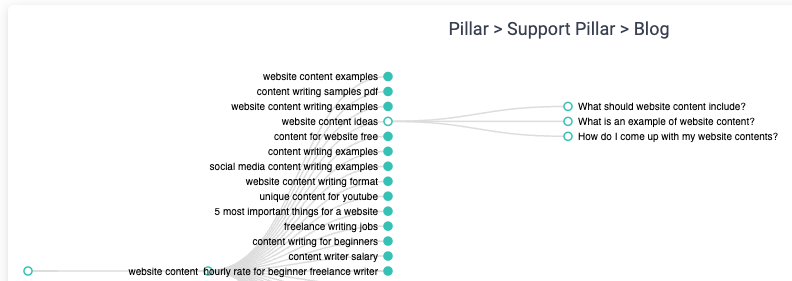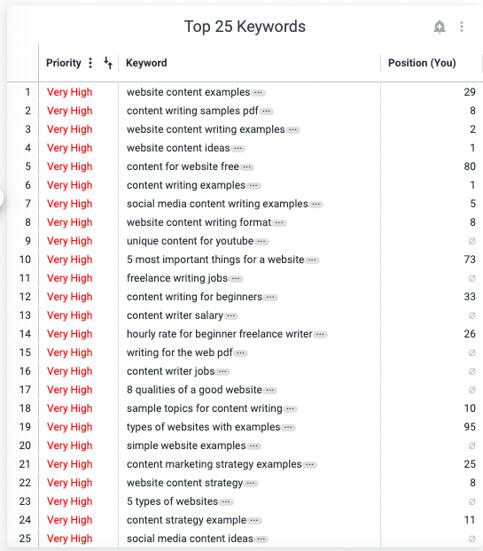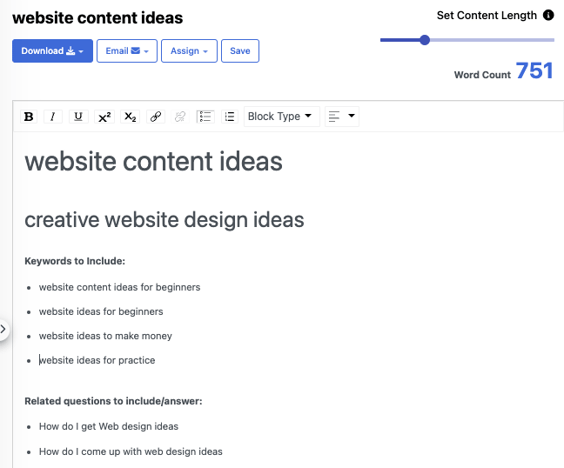Pillar-Based Marketing, or PBM for short, is one of the newest digital marketing strategies available. But just because it’s new doesn’t mean it’s a buzzword or a short-lived trend. In fact, we think Pillar-Based Marketing is set to change content marketing as we know it by providing businesses with the data and information they need to develop better content for their current or prospective customers. For marketing teams, this means actionable data and the ability to move quickly through Google’s rankings. For companies, it means more customers and higher revenue. In short, it’s a win-win for everyone involved.
But what exactly is PBM, and what are the PBM tools in marketing that are available for businesses looking to improve their content marketing? We will explore all of this and more in this article.
What Is PBM and Why Is It Important?
Pillar-Based Marketing is becoming increasingly important as more and more consumers turn to the internet to research products and services. In essence, Pillar-Based Marketing combines content marketing, search engine optimization (SEO), and other demand generation tactics to more effectively and directly target your prospective customers through organic search. PBM does this by empowering businesses to create highly-targeted, keyword-driven content that uses the exact search terminology your target audience does.
 What PBM means in layman's terms, then, is that it’s a marketing strategy that helps align your content with precisely what your prospective customers are looking for.
What PBM means in layman's terms, then, is that it’s a marketing strategy that helps align your content with precisely what your prospective customers are looking for.
Why does all of this matter? There are several reasons why Pillar-Based Marketing is relevant in 2022 and beyond. Here are a few of the most pressing.
- Consumers Go Online First: According to Think with Google, buyers go online first more than 60% of the time they shop—and this statistic is pre-pandemic. The fact is, being easily found online and through search engines can help ensure your brand, products, and services will be visible to potential customers. Increasing your rankings on search engine results pages (SERPs) is the best way to do this.
- We Don’t Click Past Page One: The majority of searchers click on an organic result on the first page of Google. Second page search results have a click-through rate of less than 1%. The best PBM software on the market will help drive your outcomes to the first page so your content—and your offerings—are seen.
- You Need to Relate to Your Target Audience: The best PBM campaigns show that when you create content that speaks the same language as your audience—with the help of precisely-worded keywords—you’ll rank higher. Not only that, but it can illustrate to your audience that you understand their pain points, a key strategy to building consumer trust.
Fortunately, you don’t have to do this all on your own. With the help of DemandJump, a powerful Pillar-Based Marketing tool, you can achieve all of this and more.
What Is a PBM Tool?
A PBM tool is a software platform that businesses can use to accomplish tasks such as:
- Performing keyword research
- Developing Pillar-Based Marketing strategies
- Understanding how competitors are ranking
- Write the exact content needed to move up the rankings on SERPs
That’s a pretty tall order. At DemandJump, our online platform accomplishes all of this with the help of three key tools: Research & Discovery, Manage Pillar Topics, and Manage Content. What do each of these mean, and how do Pillar-Based Marketing companies help you achieve great results?
Research & Discovery
For a long time, marketers have used a mix of keyword research tools and Google itself to find topics to write about and choose the words they want to rank for. Google’s “People Also Ask” and “Related Searches,” for example, can give you a glimpse into the words and phrases people enter in the search bar. But these methods don’t always provide all of the information you need to develop a comprehensive content strategy—and they can demand quite a bit of your time.
DemandJump is changing that. Our Research & Discovery tool allows you to run automated Insight Reports to gain a wealth of data around the keywords or phrases you wish to rank for. Not only that, but you can view Competitor Rankings to understand how you’re currently performing against your competitors.
What does all of this look like? Let’s take a peak at a Topic Summary dashboard for an Insight Report entitled “Website Content.” It shares information about the top 25 keywords (pictured below) and the top 25 questions, in addition to the priority of importance and where you’re currently ranking on Google.

All of the dashboards and data within the Research & Discovery section of DemandJump are designed to give you the information and data you need to choose keywords, understand the value of those keywords, and discover what keywords your competition deems important.
Manage Pillar Topics
Up until this point, you might have been wondering, “How does PBM work?” It all starts with developing a Pillar-Based Marketing strategy which centers around a singular pillar topic. Let’s break this down further.
A pillar topic is a broad category that a business wants to rank for on page one of SERPs. Generally, this topic is central to a business’s offerings, and examples might include “Used Cars,” “Gentle Dentist,” or “Website Content.” From there, your pillar strategy consists of three types of content: a pillar page, sub-pillars, and supporting blogs.
Each pillar topic will include one pillar page, which is a 3,000+ word article that covers your pillar topic at the highest level. All other pieces of content you write about this topic will link back to your pillar. Using our example above, “Website Content” would be a pillar page, and you’d explore every facet of the topic, using roughly 15-20 keywords.
Each pillar page will have sub-pillars that support it. Sub-pillars are 2,000+ word articles that explore a part of your topic in more detail. Generally, each pillar page should have at least 3 sub-pillars that link to it. Going along with our “Website Content” example from above, our sub-pillar topics might be “Website Content Ideas,” “Website Content Strategy,” and “8 Qualities of a Good Website.”
Finally, each pillar page and sub-pillar will have a series of supporting blogs that dive into very specific topics and questions. Supporting blogs are generally between 750-1,000 words in length. Supporting blogs not only link up to their assigned sub-pillar, but they link up to the overall pillar page as well. This linking strategy ensures that as much SEO emphasis as possible is placed on the pillar page. Continuing with our “Website Content” example, for your “Website Content Ideas” sub-pillar, you might write supporting blogs about “What Should Website Content Include?,” What Is an Example of Website Content?,” and “How Do I Come Up With My Website Contents?”
Where did we get these specific titles from? There’s the difficult way of manual keyword research (more on that later in this article). But the easiest way is to use DemandJump. Our Pillar Strategy dashboard automates the entire process, providing you with sub-pillars and supporting blogs to write to achieve your goals. Here’s what it looks like.

Manage Content
You’ve done your research and created a pillar—all that is left is to write the content, publish it, and start ranking. Staring at a blank page can be somewhat daunting, however. That’s where DemandJump’s Content Briefs can help.
With a single click, you can generate an outline that includes high-value keywords and phrases to include in an article. Rather than guessing at what topics to include in your article, you can develop content that aligns exactly with what your target audience is looking for. Simply set the content length (a longer content length is more suitable for longer, complex articles), choose your keywords from the Content Brief, and begin creating high-value content. Here is what a content brief for “Website Content Ideas” might look like.

What Is an Example of a PBM Campaign?
Let’s take a look at two of the many Pillar-Based Marketing examples we have available from our own customers.
One of our customers, Life Settlement Advisors, was looking to increase their market share and increase conversions around the pillar topic of “Selling Life Insurance.” Using insights gained from the DemandJump platform, Life Settlement Advisors published 2 pieces of content per week for just 6 weeks. The results? They went from 46 to 119 first page rankings in just 6 weeks. That’s a net increase of 73 additional page one rankings.
What about on the B2B side? Another of our customers, Collective[i] wanted to increase their page one rankings around the topic of “Sales Forecasting.” For three months, the team published two new pieces of content per week, and the results were outstanding. Collective[i] soared from 0 to 305 first page rankings in just those three months alone!
Explore more Pillar-Based Marketing successes on our website.
How Do I Choose a PBM Platform?
When selecting any software platform, it’s important to find the one that suits your needs. While we’re the first and only comprehensive PBM platform on the market, we’re confident that our platform can get you more page one rankings, more customers, and more revenue. Whether you’re looking at our platform or another Pillar-Based Marketing platform in the future, here are just a few of the features we think the best PBM tools should offer.
- Accounts: Unless you’re ready to jump right into Pillar-Based Marketing, you’re likely looking for a platform that offers free or low-cost accounts, at least to start. At DemandJump, we offer five account packages so you can find the option that suits your needs—and your budget. Our Free account even gives you access to DemandJump University where you can take PBM courses, learn more about the process, and even earn a Pillar-Based Marketing certification.
- Training and Support: We’re the first to admit that there’s a learning curve with every new platform. That’s why top PBM platforms offer ongoing training and support to ensure you’re making the most out of your spend. In addition to DemandJump University, all of our customers have access to email, chat support, and our Help Center.
- Data: Pillar-Based Marketing tactics in 2022 won’t get very far without good data. Look for a platform that provides data and insights around keyword research, how you’re ranking, how your competitors are ranking, and what exactly you need to do to take over the market share around your topic(s).
- Results: Look for a platform with results that speak for themselves—especially for companies that operate in similar industries. At DemandJump, our customers are B2B and B2C, operating in industries like professional services, financial services, manufacturing, SaaS, eCommerce, healthcare, and more.
DemandJump: The First and Only PBM Tool
Are you ready to increase your page one rankings, increase prospects and customers, and ultimately increase revenue for your business? That’s what DemandJump is here for.
Built for marketers and by marketers, DemandJump’s Pillar-Based Marketing platform will show you the exact content you need to create to drive better outcomes. Say goodbye to marketing guesswork and join a platform that’ll provide you with the data you need to outrank your competitors.











 What PBM means in layman's terms, then, is that it’s a marketing strategy that helps align your content with precisely what your prospective customers are looking for.
What PBM means in layman's terms, then, is that it’s a marketing strategy that helps align your content with precisely what your prospective customers are looking for.

